1,2-Difluor-4-(trifluormethyl)benzol
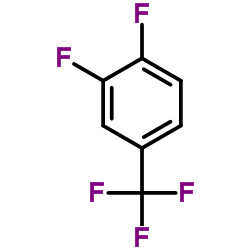
1,2-Difluor-4-(trifluormethyl)benzol structure
|
Common Name | 1,2-Difluor-4-(trifluormethyl)benzol | ||
|---|---|---|---|---|
| CAS Number | 32137-19-2 | Molecular Weight | 182.091 | |
| Density | 1.4±0.1 g/cm3 | Boiling Point | 104.2±35.0 °C at 760 mmHg | |
| Molecular Formula | C7H3F5 | Melting Point | N/A | |
| MSDS | N/A | Flash Point | 24.7±12.8 °C | |
| Name | 1,2-difluoro-4-(trifluoromethyl)benzene |
|---|---|
| Synonym | More Synonyms |
| Density | 1.4±0.1 g/cm3 |
|---|---|
| Boiling Point | 104.2±35.0 °C at 760 mmHg |
| Molecular Formula | C7H3F5 |
| Molecular Weight | 182.091 |
| Flash Point | 24.7±12.8 °C |
| Exact Mass | 182.015488 |
| LogP | 2.76 |
| Vapour Pressure | 36.2±0.2 mmHg at 25°C |
| Index of Refraction | 1.391 |
| Storage condition | Flammables area |
Synonym: Section 2 - COMPOSITION, INFORMATION ON INGREDIENTS
Risk Phrases: 11 36/37/38 Section 3 - HAZARDS IDENTIFICATION EMERGENCY OVERVIEW
Highly flammable. Irritating to eyes, respiratory system and skin. Potential Health Effects Eye: Causes eye irritation. Skin: Causes skin irritation. May be harmful if absorbed through the skin. Ingestion: May cause irritation of the digestive tract. May be harmful if swallowed. Inhalation: Causes respiratory tract irritation. Chronic: Not available. Section 4 - FIRST AID MEASURES Eyes: Flush eyes with plenty of water for at least 15 minutes, occasionally lifting the upper and lower eyelids. Get medical aid. Skin: Get medical aid. Flush skin with plenty of water for at least 15 minutes while removing contaminated clothing and shoes. Ingestion: Get medical aid. Wash mouth out with water. Inhalation: Remove from exposure and move to fresh air immediately. If not breathing, give artificial respiration. If breathing is difficult, give oxygen. Get medical aid. Notes to Physician: Treat symptomatically and supportively. Section 5 - FIRE FIGHTING MEASURES General Information: As in any fire, wear a self-contained breathing apparatus in pressure-demand, MSHA/NIOSH (approved or equivalent), and full protective gear. Extinguishing Media: Use carbon dioxide or dry chemical. Section 6 - ACCIDENTAL RELEASE MEASURES General Information: Use proper personal protective equipment as indicated in Section 8. Spills/Leaks: Absorb spill with inert material (e.g. vermiculite, sand or earth), then place in suitable container. Remove all sources of ignition. Use a spark-proof tool. Section 7 - HANDLING and STORAGE Handling: Use spark-proof tools and explosion proof equipment. Avoid breathing dust, vapor, mist, or gas. Avoid contact with skin and eyes. Storage: Keep away from sources of ignition. Store in a cool, dry place. Store in a tightly closed container. Flammables-area. Section 8 - EXPOSURE CONTROLS, PERSONAL PROTECTION Engineering Controls: Facilities storing or utilizing this material should be equipped with an eyewash facility and a safety shower. Use adequate ventilation to keep airborne concentrations low. Exposure Limits CAS# 32137-19-2: Personal Protective Equipment Eyes: Not available. Skin: Wear appropriate protective gloves to prevent skin exposure. Clothing: Wear appropriate protective clothing to prevent skin exposure. Respirators: Follow the OSHA respirator regulations found in 29 CFR 1910.134 or European Standard EN 149. Use a NIOSH/MSHA or European Standard EN 149 approved respirator if exposure limits are exceeded or if irritation or other symptoms are experienced. Section 9 - PHYSICAL AND CHEMICAL PROPERTIES Physical State: Liquid Color: clear to light yellow Odor: Not available. pH: Not available. Vapor Pressure: Not available. Viscosity: Not available. Boiling Point: Not available. Freezing/Melting Point: Not available. Autoignition Temperature: Not available. Flash Point: Not available. Explosion Limits, lower: Not available. Explosion Limits, upper: Not available. Decomposition Temperature: Solubility in water: Specific Gravity/Density: Molecular Formula: C7H3F5 Molecular Weight: 182.013 Section 10 - STABILITY AND REACTIVITY Chemical Stability: Not available. Conditions to Avoid: Incompatible materials, ignition sources. Incompatibilities with Other Materials: Oxidizing agents. Hazardous Decomposition Products: Carbon monoxide, carbon dioxide, hydrogen fluoride gas. Hazardous Polymerization: Has not been reported Section 11 - TOXICOLOGICAL INFORMATION RTECS#: CAS# 32137-19-2 unlisted. LD50/LC50: Not available. Carcinogenicity: 3,4-Difluorobenzotrifluoride - Not listed by ACGIH, IARC, or NTP. Section 12 - ECOLOGICAL INFORMATION Section 13 - DISPOSAL CONSIDERATIONS Dispose of in a manner consistent with federal, state, and local regulations. Section 14 - TRANSPORT INFORMATION IATA No information available. IMO No information available. RID/ADR No information available. Section 15 - REGULATORY INFORMATION European/International Regulations European Labeling in Accordance with EC Directives Hazard Symbols: XI F Risk Phrases: R 11 Highly flammable. R 36/37/38 Irritating to eyes, respiratory system and skin. Safety Phrases: S 16 Keep away from sources of ignition - No smoking. S 26 In case of contact with eyes, rinse immediately with plenty of water and seek medical advice. S 37/39 Wear suitable gloves and eye/face protection. WGK (Water Danger/Protection) CAS# 32137-19-2: No information available. Canada None of the chemicals in this product are listed on the DSL/NDSL list. CAS# 32137-19-2 is not listed on Canada's Ingredient Disclosure List. US FEDERAL TSCA CAS# 32137-19-2 is not listed on the TSCA inventory. It is for research and development use only. SECTION 16 - ADDITIONAL INFORMATION N/A |
| Hazard Codes | F:Flammable;Xi:Irritant; |
|---|---|
| Risk Phrases | R11;R36/37/38 |
| Safety Phrases | S37/39-S26-S16 |
| RIDADR | 1993 |
| Packaging Group | III |
| Hazard Class | 3 |
| HS Code | 2903999090 |
|
~% 
1,2-Difluor-4-(... CAS#:32137-19-2 |
| Literature: US5283378 A1, ; |
|
~63% 
1,2-Difluor-4-(... CAS#:32137-19-2 |
| Literature: Journal of Organic Chemistry, , vol. 56, # 22 p. 6406 - 6411 |
|
~% 
1,2-Difluor-4-(... CAS#:32137-19-2 |
| Literature: US5283378 A1, ; |
|
~48% 
1,2-Difluor-4-(... CAS#:32137-19-2 |
| Literature: Journal of Fluorine Chemistry, , vol. 50, # 3 p. 365 - 370 |
| Precursor 4 | |
|---|---|
| DownStream 9 | |
| HS Code | 2903999090 |
|---|---|
| Summary | 2903999090 halogenated derivatives of aromatic hydrocarbons VAT:17.0% Tax rebate rate:9.0% Supervision conditions:none MFN tariff:5.5% General tariff:30.0% |
| 1,2-Difluoro-4-(trifluoromethyl)benzene |
| MFCD00077510 |
| 1,2-Difluor-4-(trifluormethyl)benzol |
| α,α,α,3,4-Pentafluorotoluene |
| 1,2-Difluor-4-trifluormethylbenzol |
| Benzene, 1,2-difluoro-4-(trifluoromethyl)- |
| 3,4-Difluoro-trifluoromethylbenzene |
| 3,4-difluoro-benzotrifluoride |
| 1,2-difluoro-4-trifluoromethylbenzene |
| Benzene,1,2-difluoro-4-(trifluoromethyl) |
| Alpha,Alpha,Alpha,3,4-Pentafluorotoluene |
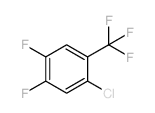

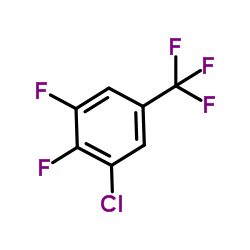
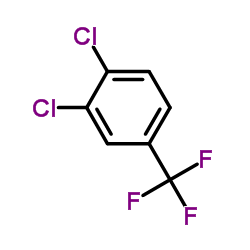
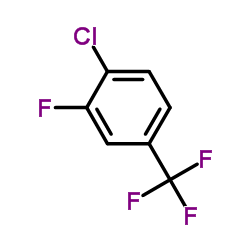

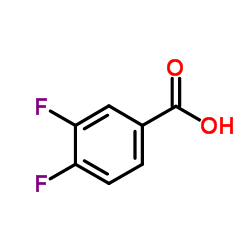 CAS#:455-86-7
CAS#:455-86-7 CAS#:85118-04-3
CAS#:85118-04-3 CAS#:69409-98-9
CAS#:69409-98-9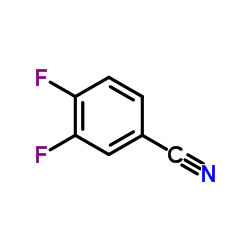 CAS#:64248-62-0
CAS#:64248-62-0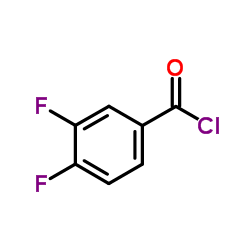 CAS#:76903-88-3
CAS#:76903-88-3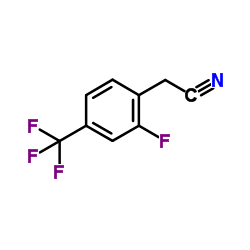 CAS#:239087-11-7
CAS#:239087-11-7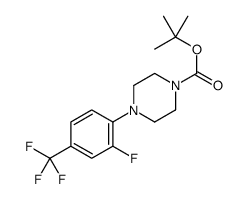 CAS#:847547-01-7
CAS#:847547-01-7
